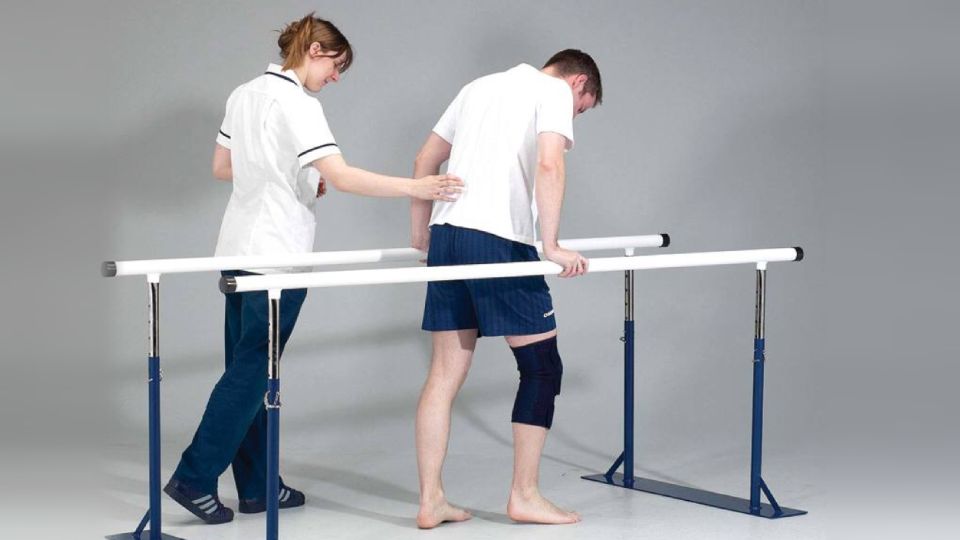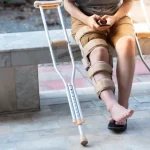Updated on February 19, 2024
Medically reviewed by Katrina Carter, DPT
Physical therapy is a healthcare specialty that includes the evaluation, assessment, and treatment of individuals with limitations in functional mobility.1 Choosing physical therapy has been shown to help you recover quickly and safely, and it can save you money due to decreased overall healthcare costs.

Physical Therapists
Physical therapy services are provided by physical therapists, who are professionals licensed by the state in which they work. Physical therapists (or PTs, as they are commonly called) are required to have a master’s degree or a clinical doctorate degree from an accredited institution and must sit for a licensing exam to practice.
Physical therapists who are already practicing and only have a master’s degree can still practice, but all new students of the profession are now required to get a doctorate degree.2
Physical therapists are trained to assess your condition and help you regain maximal functional mobility and independence. They use a variety of treatment modalities and techniques to help you move better and feel better; treatment is very personalized.3
EXERCISES FOR REHABILITATION OF POST-STROKE PATIENTS. SET №2 IS AIMED AT IMPROVING THE MOBILITY AND STABILIZATION OF THE PELVIC COMPLEX
Conditions Treated
Do You Need Physical Therapy? How do you know if you require the skilled services of a physical therapist? If you have an injury or illness that results in pain, physical impairment, or limited normal movement/loss of function, a physical therapist can help.4 Physical therapists treat people across the entire lifespan. Many PTs specialize in treating a certain population, like children, the elderly, or athletes. Regardless of age, if you have impaired mobility, a physical therapy evaluation may be warranted to offer treatment and a strategy to improve function.
Some common problems that physical therapists evaluate and treat include:
- Stroke5
- Fractures
- Spinal cord injury6
- Carpal tunnel syndrome
- Sports injuries
- Amputations7
- Arthritis
Know, however, that physical therapists can treat many other problems besides the ones listed. Be sure to speak with your healthcare provider if you feel you may benefit from this treatment. When an injury or illness occurs that limits your ability to move about safely or normally, a referral to a physical therapist may be made. Physical therapists work closely with patients, healthcare providers, and family members to ensure a safe and rapid return to maximal function.4
Physical therapists can also help you prevent injury or loss of functional mobility.
Your PT can analyze your movements before you are injured and offer strategies to help keep you healthy and moving well.3 Some physical therapists work with athletes to help keep them on the playing field and out of the rehab clinic, for example.
Multiple Sclerosis. Exercises for stretching and improving body flexibility and joint mobility, reducing tone.
Settings
Where to Get Physical Therapy. Physical therapists work in a variety of different settings.3 Anywhere you may encounter a person who may be having difficulty with normal mobility is where you may find a physical therapist, including:
- In the hospital
- In nursing homes
- In outpatient clinics
- With sports teams
- In schools (many state laws require that children receive services in the setting that is most familiar to them and/or that allows them to stay on track with their peers)
- In your home (if you are unable to leave due to illness or injury)
- In cardiac rehab centers
Upper limb problems. Set No.1 improvement of mobility and range of joint movement
Preparation
Preparing for Physical Therapy. When you are preparing for physical therapy, there are a few things you can do to ensure you have a positive experience. First, ask questions before choosing a physical therapist. Some PTs are clinical specialists; finding one who specializes in treating your specific problem can help. You should ask about insurance coverage, cancellation or no-show policy, and what you should wear to your PT appointment.
Your physical therapist should work with you to set specific goals, so be prepared to tell your physical therapist exactly what you hope to achieve during therapy. If you don’t understand a specific treatment that is occurring during your PT sessions, ask.
Your relationship with your physical therapist should feel like a therapeutic alliance, with both of you working together to achieve specific goals.
Lower limb problems. Exercises for the knee joint. Set 4A is aimed at strengthening the muscles. Initial stage.
Evaluation
When you first visit a physical therapist, he or she will evaluate and assess your overall condition. He or she may take specific measurements to gather information about your illness or injury. Impairments typically measured may include:
- Strength
- Range of motion
- Flexibility
- Balance
- Joint mobility
- Neurological function
- Pain
- Cardiac function
- Pulmonary function
- Overall functional mobility
After gathering information about your injury or illness, your PT will make a prognosis of your condition and can offer strategies to help you move better and feel better. He or she will discuss your goals for physical therapy and work with you to develop a treatment plan for your rehab.
EXERCISES FOR OVERWEIGHT | OBESE PEOPLE. SET NO. 1: GENERAL EXERCISES TO STRENGTHEN MUSCLES AND IMPROVE JOINT MOBILITY
During Treatment
What to Expect During Treatments. Physical therapists use many different techniques to help you decrease pain and stiffness, improve motion and strength, and improve mobility. Physical agents such as heat, ice, ultrasound, or electrical stimulation may be used. Manual techniques are often used to help improve mobility.
Therapeutic exercise is often used by physical therapists to help people gain range of motion, increase strength, and improve function. Patient education about a condition or illness is paramount to the practice of physical therapy, and therapists may use charts, models, and diagrams to help you understand your diagnosis and prognosis.
You may also be given modifications to make or exercises to do at home.
By Brett Sears, PT
Brett Sears, PT, MDT, is a physical therapist with over 20 years of experience in orthopedic and hospital-based therapy.

Demo version of GRS workouts for rehabilitation on YouTube
It’s natural to feel some anxiety when first going to physical therapy. What will happen? Will therapy hurt? These feelings typically quickly go away once you meet your physical therapist and get working on your rehab goals. By understanding what your physical therapist can do to help you, you can have realistic expectations about your rehab and a positive outcome with your physical therapy experience.
FREQUENTLY ASKED QUESTIONS
1. Is a physical therapist a doctor?
Not in the traditional sense. A physical therapist is not a medical doctor and cannot prescribe medication. However, you must first earn a doctorate in physical therapy (DPT) to become a physical therapist. Anyone who earns a doctorate may use the honorific Dr. before their name.
2. What is PT?
PT stands for physical therapy, though it is sometimes jokingly called pain and torture. Physical therapy uses various modalities, massage, stretching, and strengthening exercises.
The goal is to improve or restore functioning and minimize pain. However, to meet that goal typically requires hard work and pain.
3. Do I need a referral to physical therapy?
Whether or not you need a referral to physical therapy depends on your insurance company, but getting one from your primary care physician or another doctor couldn’t hurt.
Physical therapists treat many different conditions, including arthritis, balance problems, carpal tunnel syndrome, gait problems, fractures, frozen shoulder, sports injuries, recovery from stroke, and many other things.
If you think you need physical therapy, check with your insurance company to see if you need a referral and find a provider in your plan.
Sources
https://www.verywellhealth.com/physical-therapy-4014670
- National Institute of Health. Physical Therapy.
- American Physical Therapy Association. Physical Therapist (PT) Education Overview.
- Bezner JR. Promoting Health and Wellness: Implications for Physical Therapist Practice. Phys Ther. 2015;95(10):1433-44. doi:10.2522/ptj.20140271
- American Physical Therapy Association. Role of a Physical Therapist.
- Rehabilitation After Stroke. National Institute on Aging website. https://www.nia.nih.gov/health/rehabilitation-after-stroke.
- Gómara-toldrà N, Sliwinski M, Dijkers MP. Physical therapy after spinal cord injury: a systematic review of treatments focused on participation. J Spinal Cord Med. 2014;37(4):371-9. doi:10.1179/2045772314Y.0000000194
- Merck Manual. Rehabilitation After Limb Amputation.
Additional Reading
- Guide to Physical Therapist Practice 3.0. Alexandria, VA: American Physical Therapy Association; 2014.










